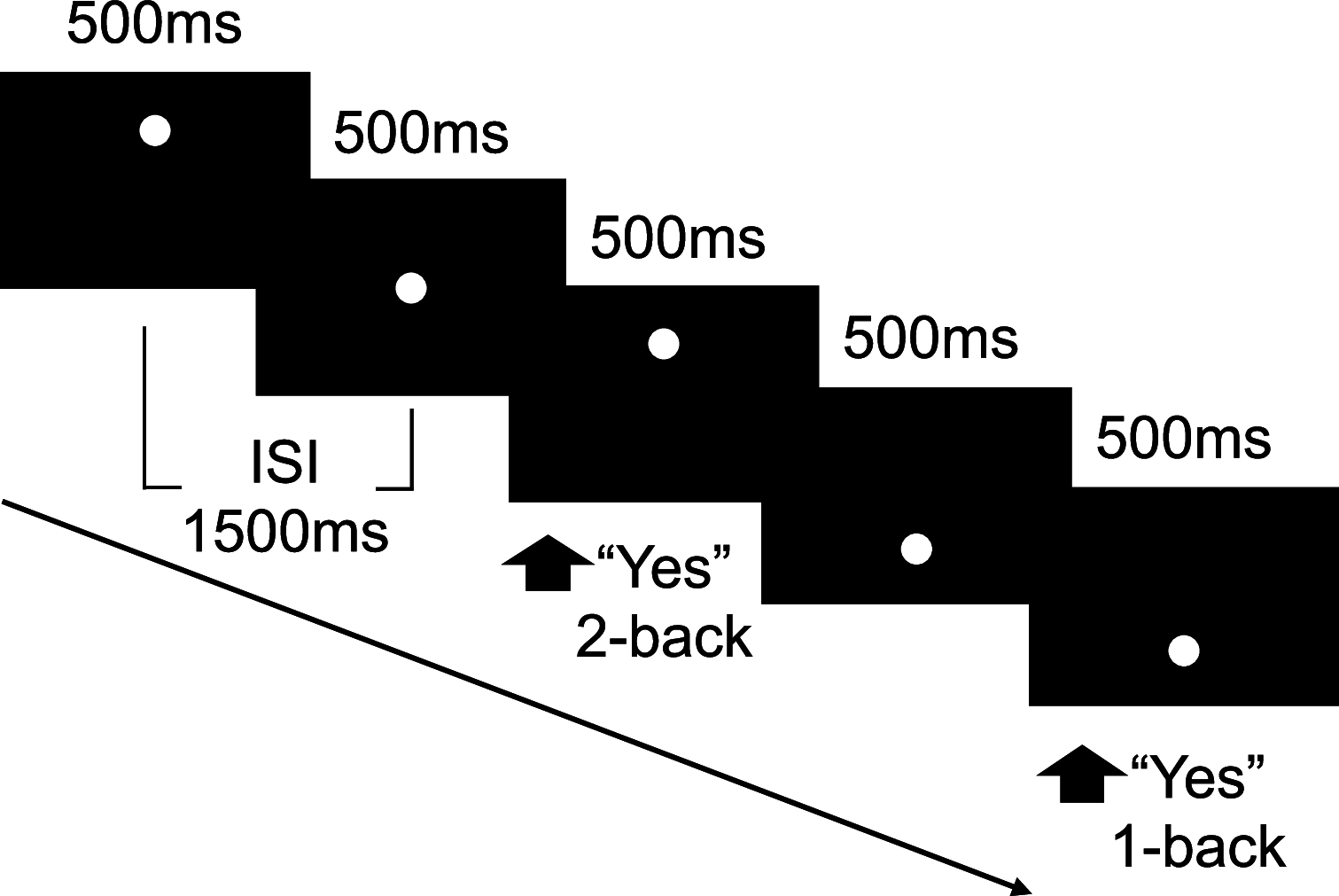Cognitive and neural abnormalities: working memory deficits in bipolar disorder offspring
- PMID: 40314170
- PMCID: PMC12094646
- DOI: 10.1017/S0033291725001060
Cognitive and neural abnormalities: working memory deficits in bipolar disorder offspring
Abstract
Background: Offspring of parents with bipolar disorder (BD offspring) face elevated risks for emotional dysregulation and cognitive deficits, particularly in working memory. This study investigates working memory deficits and their neural correlates in BD offspring.
Methods: We assessed 41 BD offspring and 25 age-matched healthy controls (HCs) using a spatial N-back task and task-related functional magnetic resonance imaging (fMRI).
Results: Compared to HCs, BD offspring exhibit reduced accuracy and lower signal-detection sensitivity (d') on the 1-back task. fMRI reveals hyperactivation in the right intracalcarine cortex/lingual gyrus (ICC/LG) in BD offspring, particularly during the 1-back condition. Psychophysiological interaction (PPI) analyses show reduced connectivity between the right ICC/LG and the left postcentral gyrus in BD offspring as task load increases from 0-back to 1-back. This connectivity positively correlates with 1-back task performance in HCs but not in BD offspring. Additionally, using bilateral dorsolateral prefrontal cortex (DLPFC) as regions of interest, PPI analyses show diminished condition-dependent connectivity between the left DLPFC and the left superior frontal gyrus/paracingulate cortex, and between the right DLPFC and the left postcentral gyrus/precentral gyrus in BD offspring as the task load increases.
Conclusions: These findings suggest that BD offspring exhibit working memory deficits and impaired neural connectivity involving both sensory processing and higher-order cognitive systems. Such deficits may emerge at a genetically predisposed stage of bipolar disorder, underscoring the significance of early identification and intervention strategies.
Keywords: BD offspring; bipolar disorder; functional magnetic resonance imaging; prefrontal cortex; working memory.
Conflict of interest statement
The authors declare no competing interests.
Figures






Similar articles
-
Altered prefrontal cortex activity during working memory task in Bipolar Disorder: A functional Magnetic Resonance Imaging study in euthymic bipolar I and II patients.J Affect Disord. 2015 Sep 15;184:116-22. doi: 10.1016/j.jad.2015.05.026. Epub 2015 May 21. J Affect Disord. 2015. PMID: 26074021
-
Resting-state fMRI signals in offspring of parents with bipolar disorder at the high-risk and ultra-high-risk stages and their relations with cognitive function.J Psychiatr Res. 2018 Mar;98:99-106. doi: 10.1016/j.jpsychires.2018.01.001. Epub 2018 Jan 8. J Psychiatr Res. 2018. PMID: 29331931
-
Anomalous prefrontal-subcortical activation in familial pediatric bipolar disorder: a functional magnetic resonance imaging investigation.Arch Gen Psychiatry. 2004 Aug;61(8):781-92. doi: 10.1001/archpsyc.61.8.781. Arch Gen Psychiatry. 2004. PMID: 15289277
-
Assessing working memory via N-back task in euthymic bipolar I disorder patients: a review of functional magnetic resonance imaging studies.Neuropsychobiology. 2013;68(2):63-70. doi: 10.1159/000352011. Epub 2013 Jul 19. Neuropsychobiology. 2013. PMID: 23881005 Review.
-
Association Between the Fronto-Limbic Network and Cognitive and Emotional Functioning in Individuals With Bipolar Disorder: A Systematic Review and Meta-analysis.JAMA Psychiatry. 2023 May 1;80(5):432-440. doi: 10.1001/jamapsychiatry.2023.0131. JAMA Psychiatry. 2023. PMID: 36988918 Free PMC article.
References
-
- Acuff, H. E. , Versace, A. , Bertocci, M. A. , Ladouceur, C. D. , Hanford, L. C. , Manelis, A. , Monk, K. , et al. (2018). Association of neuroimaging measures of emotion processing and regulation neural circuitries with symptoms of bipolar disorder in offspring at risk for bipolar disorder. JAMA Psychiatry, 75(12), 1241–1251. - PMC - PubMed
-
- Au, C. K. F. , Abrigo, J. , Liu, C. , Liu, W. , Lee, J. , Au, L. W. C. , Chan, Q. , et al. (2021). Quantitative susceptibility mapping of the hippocampal fimbria in Alzheimer’s disease. Journal of Magnetic Resonance Imaging, 53(6), 1823–1832. - PubMed
-
- Bush, G. , Vogt, B. A. , Holmes, J. , Dale, A. M. , Greve, D. , Jenike, M. A. , & Rosen, B. R. (2002). Dorsal anterior cingulate cortex: A role in reward-based decision making. Proceedings of the National Academy of Sciences of the United States of America, 99(1), 523–528. 10.1073/pnas.012470999 - DOI - PMC - PubMed
-
- Chang, M. , Edmiston, E. K. , Womer, F. Y. , Zhou, Q. , Wei, S. , Jiang, X. , Zhou, Y. , et al. (2019). Spontaneous low-frequency fluctuations in the neural system for emotional perception in major psychiatric disorders: Amplitude similarities and differences across frequency bands. Journal of Psychiatry and Neuroscience, 44(2), 132–141. 10.1503/jpn.170226 - DOI - PMC - PubMed

